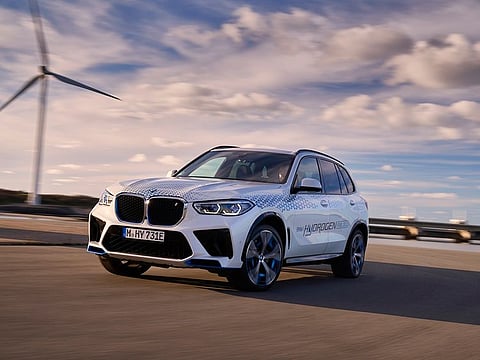Hydrogen’s lightness of touch sure can fuel future of mobility
Given the commitments made, Middle East can fast-track hydrogen’s role

The world is at a crossroads.
At the precipice of a climate-affected future, it is imperative to determine the way forward with responsible and sustainable choices. The Paris Agreement was a significant milestone in the fight against climate change, yet only one aspect of the collective action required to address this global challenge.
A crucial part of the narrative in creating a climate-viable world lies in emission-free mobility, and the journey might be closer than we think. As the world shifts towards alternative energy sources, hydrogen-powered cars hold immense promise for transforming the mobility landscape and creating a sustainable future.
And our region is poised to become a prominent driver in this transformative change.
When it comes to emission-free mobility, hydrogen is a key missing piece in the puzzle. As a clean and efficient energy carrier, hydrogen can be produced using renewable sources, such as wind and solar power, ensuring a sustainable production cycle and a reduction of emissions.
The International Energy Agency (IEA) has recognised the significant potential of hydrogen as a future energy source, particularly in the context of global activities focused on energy transition.
Hydrogen gives us infinite possibilities to forge ahead. As the lightest chemical element, it has the unique ability to help us overcome our dependency on finite natural resources, paving the way for a more sustainable future.
To release energy, hydrogen is combined in the fuel cell with oxygen and turned into water vapour using a catalyst. Fuel-cell electric vehicle technology has the potential to play a significant role in decarbonising the mobility sector.
From the sands of the Middle East, a green revolution is rising. In this region, rich with abundant renewable resources, geographical convenience and major ongoing infrastructure investments, we are uniquely and strategically positioned to lead the global green hydrogen market.
Already geared to hydrogen
With over 50 green hydrogen projects in the region, as stated by a MEED report in November 2022, it stands at the forefront of achieving net-zero carbon emissions by 2050, putting regional and global climate goals in forward drive. Even as the region is taking proactive steps to diversify its energy portfolio and embrace sustainable solutions, forward-thinking automotive companies are leading the charge towards a hydrogen revolution.
We have been pioneering emission-free technologies for over four decades at BMW Group, treading a clear path to become climate neutral by 2050. As a strong advocate of circular economy principles, part of which comprise resource efficiency and waste reduction, we’re reinforcing our commitment to sustainability through the BMW iX5 Hydrogen.
Hydrogen as an energy carrier presents other remarkable advantages. It can be stored and transported efficiently, making it a flexible, reliable energy solution and creating a virtuous cycle of sustainable energy production and consumption.
As we embark on a new era of mobility, adaptation and evolution are key. By lining up fuel-cell-powered electric vehicles (FCEVs) alongside battery electric vehicles (BEVs) for the future, BMW Group is helping bridge the gap between conventional and sustainable mobility options.
To make hydrogen a viable and sustainable fuel option for passenger vehicles, we are evaluating the possibility of mass production of hydrogen-powered vehicles in the second-half of this decade.
As we look down the road, the future of mobility in the MENA region appears bright, aligning with its renewable energy potential and with hydrogen fuel cell technology poised to play a pivotal role in achieving a cleaner and more sustainable world.
By focusing on the potential of hydrogen as a sustainable energy source, companies like BMW Group are not only creating different mobility options but also promoting a holistic approach to conservation. Driving this vision of an environmentally responsible future will ensure our roads are filled with vehicles that not only exemplify advanced technology but also contribute to a healthier planet for generations to come.
Sign up for the Daily Briefing
Get the latest news and updates straight to your inbox








